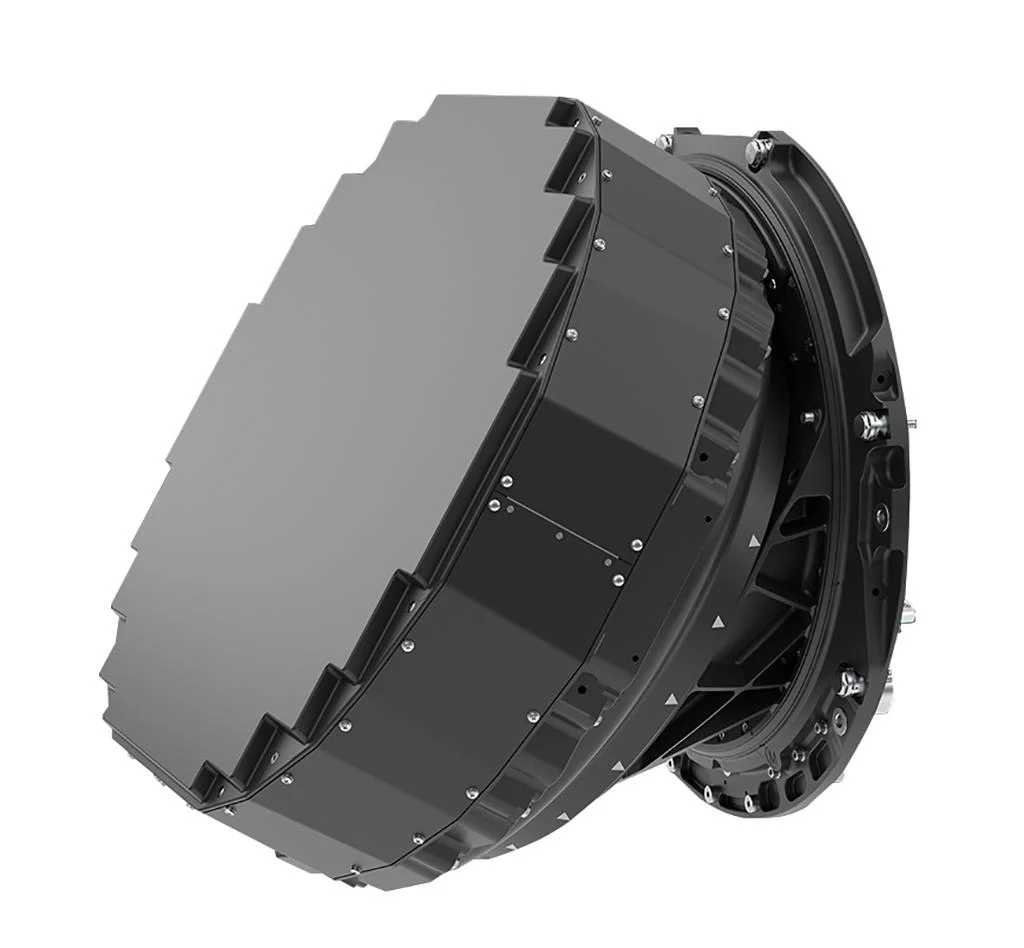
Germany is set to become the first of the Eurofighter Typhoon partner nations to retrofit an active, electronically scanned array (AESA) radar, a move that should bolster the fighter’s export potential.
The German Parliament has given a green light for Berlin to spend €2.8 billion ($3.1 billion) to install the Euroradar consortium’s Captor-E radar in all—around 106—of the German Air Force’s Tranche 2 and 3 aircraft from around 2023. Contracts should be signed in the coming weeks.
- Hensoldt will be the design authority for the retrofit program
- Germany is receiving the Mk. 1 version of the Captor-E AESA
Export customers will receive Captor-E first. Kuwait has ordered 28 aircraft, and Qatar 24, and a batch of Kuwaiti aircraft will be delivered this year. But program officials believe that with the AESA finally receiving partner nation backing, the Typhoon’s chances in competitions closer to home may have moved up a notch.
AESA-equipped Typhoons are proposed for both Finland and Switzerland. But the radar’s capabilities could not be evaluated when the fighter took part in trials in those countries, as the participating aircraft were not fitted with it; its competitors were.
All four Eurofighter partner nations, Germany, Italy, Spain and the UK, supported development of the radar, done by a consortium of Leonardo, Hensoldt and Indra, but have been reluctant to make the retrofit investment. That is due in part to budgets, but also reflects their satisfaction with the currently installed mechanically scanned Captor. The AESA, however, boosts radar performance and range, giving the aircraft a sensor that can match the performance of the MBDA Meteor beyond-visual-range air-to-air missile. A mechanical repositioner helps widen the radar’s field of view to around 200 deg., from 120 deg. with the existing mechanically scanned radar.
For the German retrofit program, Hensoldt will take a leading role in the production and delivery of the radars and act as the design authority, while Airbus will act as the test and integration lead.
“With this decision, Germany is taking on a pioneering role in the field of key technology for the Eurofighter for the first time,” says Hensoldt CEO Thomas Muller. “It is a signal for Europe that Germany is investing in a technology that is of crucial importance for European defense cooperation.”
Airbus Defense and Space CEO Dirk Hoke says the addition of the radar will increase the mission effectiveness of the aircraft and help integrate it with the Franco-German Spanish Future Combat Air System.
Leonardo, which led Captor-E development, will provide support to Hensoldt in its role as design authority. Leonardo will also supply the radar’s processor.

Three different versions of the Captor-E have been developed or are under development. The German retrofit program calls for the installation of the Mk. 1 radar, which has been developed from the Mk. 0 radar that will be delivered to Kuwait and Qatar. The Mk. 1 adds new modes and a multichannel receiver. Along with being retrofitted to the German Tranche 2 and 3 aircraft, it also likely will be fitted to the 38 new-build aircraft planned under Berlin’s Quadriga buy to replace its existing Tranche 1 Eurofighters, which lack the computing and electrical power for an AESA installation.
Work has also begun on the Radar 2 being developed for the UK, which will feature an electronic attack capability. It is expected to enter service in the mid-2020s, and the UK plans to install it on its Tranche 3 model aircraft.
Spain too is planning a retrofit program with the Mk. 1 radar, but also limited to its Tranche 3 fleet. Airbus revealed last November, however, that the novel coronavirus pandemic appears to have delayed Madrid’s plans.
An AESA has been part of the Eurofighter’s development road map for around 15 years. The consortium had originally hoped that it could form part of the Tranche 3 fleet. The capability was also part of the consortium’s ultimately unsuccessful offer for India. But it was not until 2014 that the first Captor-E development radar began flying in the aircraft, making an appearance at the 2014 Farnborough Airshow.
The AESA radar capability is added through the Eurofighter’s Phase 3B Enhancement (P3E(b)) package that will be delivered to Kuwait. Leonardo completed flight trials in support of the Mk. 0 radar development and P3E(b) in late May.
Along with the Quadriga purchase, known in Germany notionally as Tranche 4, the country is also planning to use the Eurofighter, as well as the Boeing F/A-18 Super Hornet, to replace the Panavia Tornado fleet, although these plans are subject to parliamentary approvals that could come as late as 2022-23 (AW&ST May 4-17, p. 50). Egypt is also reportedly interested in purchasing up to 24 Eurofighters, possibly as part of a multibillion euro procurement from Italy that also includes jet trainers, helicopters and warships.





